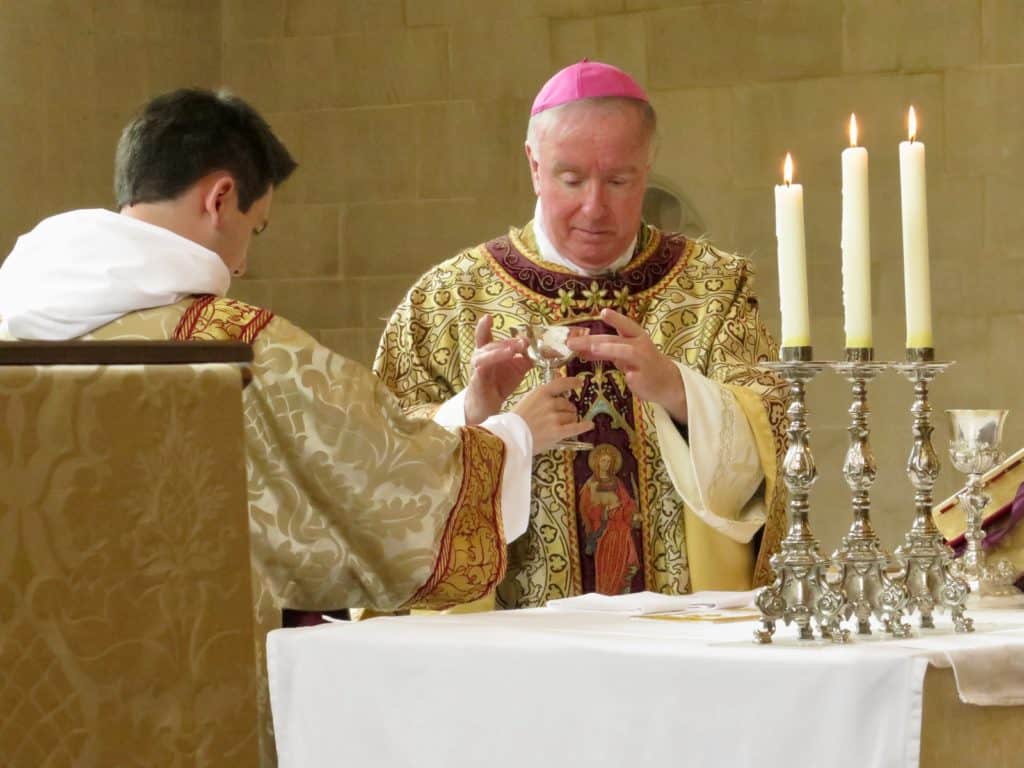In the Catholic Church, we follow this particular hierarchy: The Pope has the highest rank and the leader of the Catholic Church, followed by the cardinals, then we have the bishops, followed by the priests, and then finally, the deacons. The priest’s and deacon’s role may be a puzzle for some, but it’s not that complicated.
What is the Difference Between a Deacon and a Priest?
A Catholic Priest is a Roman Catholic man who God called to serve Him through receiving the Sacrament of Holy Orders. A Catholic Priest is seen as a “connector” between God and humans through exercising his service for the people of God by teaching, divine reverence, and pastoral governance. (Catechism of the Catholic Church 1592)
A deacon is a Roman Catholic man that is an ordained member of the Catholic Clergy. The word “deacon” originated from the Greek word “diakonos,” which means to serve or as an attendant for service. Therefore, the role and degree of the Diaconate are intended to be of service.
What can Priests do that Deacons cannot?
There are many duties that both priests and deacons can do, but there are some limitations for deacons. Let’s start with the sacraments.
The Holy Eucharist
When it comes to the Holy Eucharist’s sacrament, only the Priests can celebrate Mass and consecrate the bread and wine to the Body and Blood of Christ. The Deacon can, however, distribute Holy Communion and possibly preach the homily.
The Sacrament of Baptism
In Baptism, both a priest and a deacon can administer the sacrament.
The Sacrament of Reconciliation
When pertaining to the Sacrament of Reconciliation, it is indisputable that only a Priest can administer confession. However, if you are seeking some counseling and guidance on your spiritual life, you may talk to a deacon. But do note that he is not able to give you the Sacrament of Reconciliation.
The Sacrament of Confirmation
Only a Bishop can administer the Sacrament of Confirmation. A Priest may do so by law but within some circumstances. Inevitably, a deacon can not conduct the Sacrament of Confirmation. (Can. 882)
Anointing of the Sick
As stated by the Can. Law 1003 “Every priest and a priest alone validly administers the anointing of the sick.” Therefore a deacon may not conduct this sacrament. He, however, may do a pastoral visit for the sick.
The Sacrament of Matrimony
Priests may celebrate Mass and the marriage ceremony. On the other hand, since deacons are not allowed to celebrate Mass, they may only officiate in a Catholic marriage ceremony.
Holy Orders
Only Bishops can administer Ordination. Both Priests and Deacons are not allowed to do so.
How to Become a Priest?
Choosing to become a Priest means that you will take the role and responsibilities of uniting God’s teaching, divine reverence, and pastoral governance. (Catechism of the Catholic Church 1592) to His people. The priesthood path must always begin through a discernment process, leading to studying and pastoral exposure in the Seminary. Afterwhich will result in becoming a transitional deacon, then solidifies through the Ordination. However, once you are ordained, it does not end there. Becoming a priest is a lifetime commitment and partnership with God.
How to be a Catholic Deacon?
Before anything else, you must know that only men are allowed to be deacons. Only men are allowed to be ordained in the Catholic Church, and a deaconship is an ordained position. Hence women can not be deacons. The Catholic Church recognizes two kinds of deacons. The Transitional deacons and the Permanent deacons.
Transitional Deacons are seminarians who are going through their last year of liturgical education and preparation to become a Catholic Priest. The Permanent Deacons are ordained Catholic Church members who have no intent or desire to become priests. Permanent Deacons can be married or single. But if he is married, he must be married before he is ordained as a deacon.
Becoming a permanent deacon has many requirements; for starters, he must be a baptized practicing member of the Roman Catholic Church and must possess a minimum age of 35. As mentioned, a permanent deacon may be married. If so, the marriage must be recognized by the Church. However, if the candidate for a Permanent deacon is not married but widowed or single, they are expected to have the vow of celibacy. Of course, you must discuss the decision to be a deacon with your family and relatives and must do some discerning since becoming a Deacon is not just a voluntary act but a true vocation from God.
What do Priests and Deacons Wear?
Both Priests and Deacons wear symbolic vestments during Catholic liturgies. Sometimes it looks as if they are wearing the same things, but there are some similarities and differences. For starters, they both wear the “Alb” the Alb is an all-white garment that symbolizes purity. It is then secured by the “Cincture,” which is the rope tied around the Alb, which is also a symbol of purity and the vow of chastity.
The priests wear a “Chasuble.” This is what we often see as a colorful robe-like cape that priests wear while celebrating Mass. You can also note that the Chasuble comes in different colors and that these colors all have meaning and are worn during a corresponding season or feast.
For the deacons, there is the “Dalmatic.” The only difference between the Dalmatic and Chasuble is that the Dalmatic has sleeves.
Lastly, both priests and deacons wear a “stole.” A Stope is a symbol that a priest and Deacon is on official sacramental duty. The priest places his stole around his neck while a deacon wears it diagonally across his chest.
